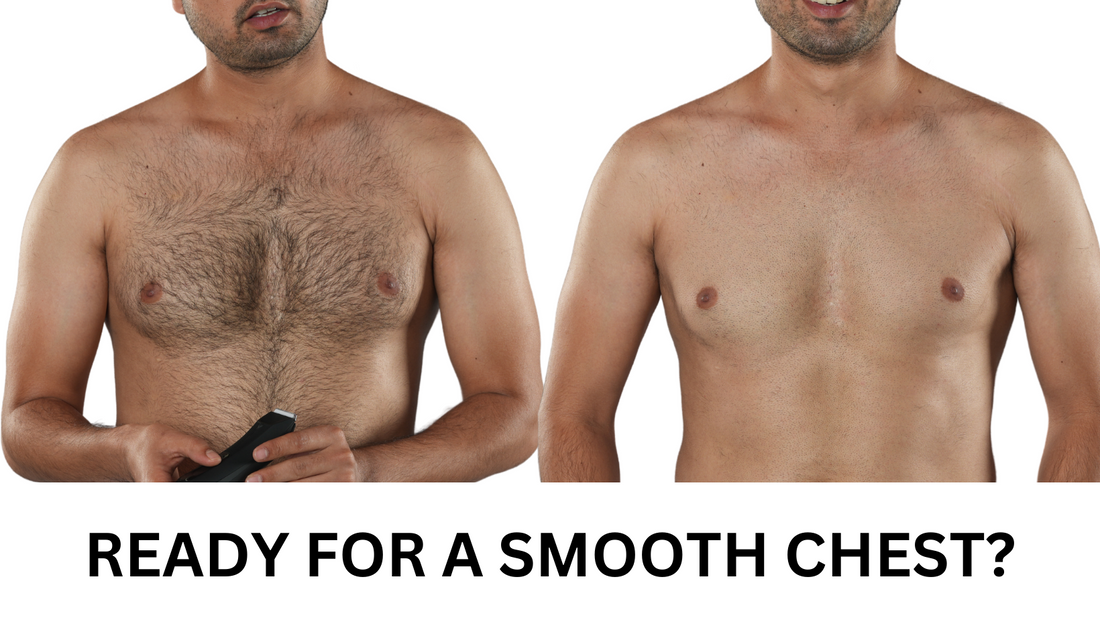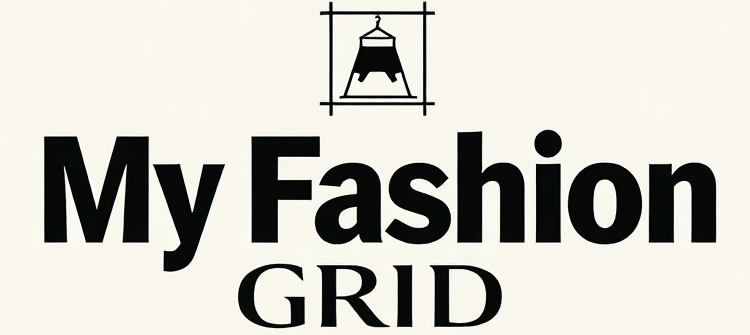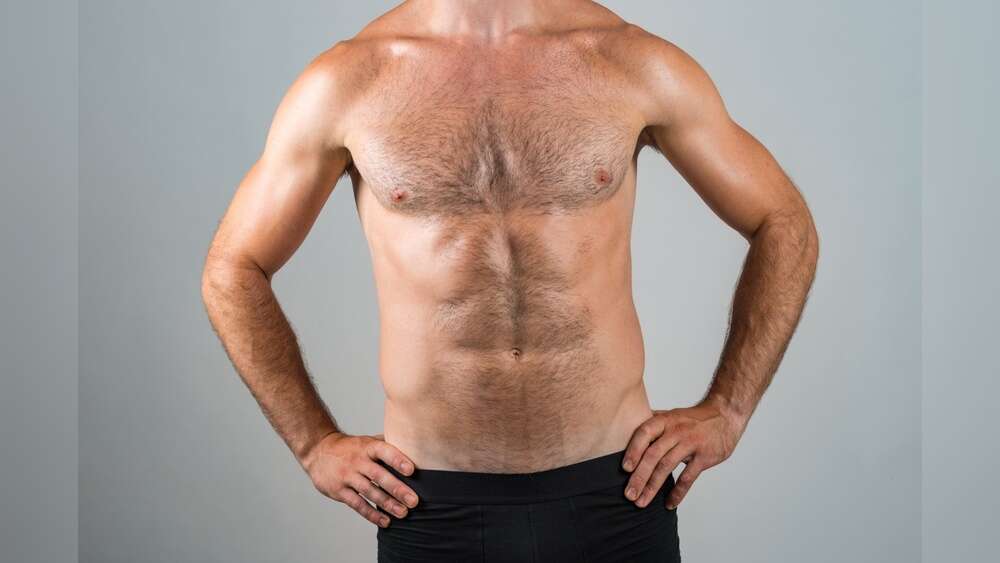If you have really long chest hair and are wondering how to shave it without irritation or mess, you’re not alone. Managing thick, lengthy chest hair can feel tricky, but with the right steps, you can get a smooth, comfortable shave that looks great.
Whether you want to trim it down or go completely bare, knowing how to prepare your skin, choose the right tools, and shave properly makes all the difference. Keep reading to discover simple, effective tips that will help you master shaving your long chest hair with ease and confidence.

Credit: www.bombayshavingcompany.com
Preparing Chest Hair
Preparing your chest hair before shaving is essential for a smooth and comfortable shave. Long chest hair can be tough to shave directly, so taking time to prepare helps reduce skin irritation and achieves better results. Follow these simple steps to get ready.
Trimming Long Hair First
Start by trimming your chest hair with scissors or an electric trimmer. Cut the hair down to a shorter length. This makes shaving easier and prevents the razor from clogging. Trim carefully to avoid skin cuts.
Softening Hair With Warm Water
Next, soften your hair and skin using warm water. Take a warm shower or apply a warm towel on your chest for a few minutes. Warm water opens pores and makes hair softer. This step helps the razor glide smoothly and reduces irritation.
Choosing The Right Tools
Select the best tools for shaving long chest hair. Use a sharp razor or an electric shaver designed for body hair. Avoid dull blades that pull hair and cause discomfort. Also, use a good shaving cream or gel to protect your skin during shaving.
Shaving Techniques
Shaving really long chest hair needs care and the right techniques. Using proper methods makes the process easier. It also helps avoid cuts, irritation, and uneven results. Here are some effective shaving techniques to follow.
Shaving With The Grain
Start by shaving in the direction your hair grows. This reduces skin irritation and razor bumps. Long chest hair can pull and tug if shaved against the grain. Move the razor gently and steadily for a smooth shave.
Using Light, Gentle Strokes
Use light pressure while shaving to avoid cutting the skin. Heavy strokes can cause nicks and redness. Glide the razor slowly over the chest hair in short, gentle movements. Rinse the blade often to keep it clean and sharp.
Handling Sensitive Areas
The skin around the nipples and chest can be sensitive. Shave these areas with extra care. Use your free hand to stretch the skin slightly for a closer, safer shave. Avoid going over the same spot multiple times to prevent irritation.
Post-shave Care
Post-shave care is key after shaving really long chest hair. It soothes the skin and helps avoid problems. This care keeps your skin smooth and healthy.
Taking the right steps after shaving reduces irritation and keeps your skin fresh. Follow these simple tips for the best results.
Rinsing And Moisturizing
Rinse your chest with cool water to remove leftover hair and shaving cream. Cool water closes pores and calms the skin.
Apply a gentle moisturizer to keep skin soft and hydrated. Use a lotion made for sensitive skin to avoid dryness.
Preventing Irritation And Ingrown Hairs
Pat your skin dry with a soft towel. Avoid rubbing to prevent irritation.
Exfoliate your chest a few times a week. This removes dead skin and stops hairs from growing inward.
Wear loose clothing after shaving to avoid friction and redness.
Using Aftershave Products
Choose alcohol-free aftershave products to prevent burning sensations. These soothe and protect the skin.
Look for aftershaves with natural ingredients like aloe vera or chamomile. They reduce redness and calm the skin.
Apply aftershave gently to avoid extra irritation. Let it dry before putting on clothes.
Tips For Maintaining Chest Hair
Maintaining chest hair requires care and attention to keep it neat and comfortable. Proper grooming helps prevent irritation and promotes a clean look. Follow simple tips to manage long chest hair effectively.
These tips focus on trimming, styling, and handling different hair types for the best results.
Regular Trimming Schedule
Trim chest hair every one to two weeks to avoid overgrowth. Use a good quality trimmer with adjustable guards. Keeping a regular schedule prevents hair from becoming too long and tangled. It also reduces itching and sweat buildup.
Choosing Between Full Shave And Styling
Decide if you want a full shave or styled chest hair. A full shave gives a smooth, clean chest but may cause irritation. Styling keeps some hair length and shapes it for a natural look. Use scissors or trimmers to outline your desired style.
Dealing With Different Hair Types
Coarse hair needs sharper blades and slower shaving to avoid pulling. Fine hair trims easily but may require more frequent care. Curly hair can cause ingrown hairs; exfoliate skin before shaving to help. Always moisturize after grooming to soothe skin.
Common Mistakes To Avoid
Shaving really long chest hair can be tricky. Many make simple mistakes that cause irritation and poor results. Avoid these common errors to get a smooth and comfortable shave.
Knowing what to avoid helps protect your skin and keeps the process easy.
Shaving Dry Skin
Shaving dry skin causes razor burns and cuts. Hair pulls more, leading to pain. Wet your chest with warm water before shaving. Use shaving cream or gel to soften hair. This protects your skin and helps the razor glide smoothly.
Using Dull Blades
Dull blades tug at hair instead of cutting cleanly. This causes irritation and razor bumps. Always use a sharp razor blade for chest hair. Change blades often, especially if you shave thick, long hair. A sharp blade reduces discomfort and gives a better shave.
Ignoring Skin Preparation
Skipping skin prep leads to cuts and irritation. Clean your chest before shaving to remove sweat and dirt. Exfoliate gently to clear dead skin cells. This prevents clogged razors and bumps. After shaving, rinse with cool water and apply moisturizer to soothe skin.

Credit: www.reddit.com

Credit: www.purplle.com
Frequently Asked Questions
How To Shave Long Chest Hair?
Trim long chest hair with clippers first. Shower to soften hair and skin. Apply shaving cream evenly. Shave gently with the grain using a sharp razor. Rinse frequently and moisturize skin afterward to prevent irritation. Avoid sensitive areas like nipples for safety.
What Length Should You Shave Chest Hair?
Shave chest hair to a length of about 1/8 to 1/4 inch for a neat, groomed look. Trim longer hair first. Use a sharp razor and shave with the grain to avoid irritation. Moisturize skin after shaving to soothe and prevent dryness.
How To Shave Really Long Hair?
Trim long hair first using clippers. Soften skin with warm water. Apply shaving cream. Shave gently with the grain. Rinse blade often and moisturize skin after.
Is It Normal To Have Long Chest Hair?
Yes, having long chest hair is normal. Hair length and thickness vary by genetics and ethnicity. Many men naturally grow long chest hair.
Conclusion
Shaving really long chest hair takes patience and the right tools. Trim the hair first to avoid clogging your razor. Always shave in the direction of hair growth to reduce irritation. Use a sharp blade and plenty of shaving cream for a smooth finish.
Take your time and rinse often to keep the skin clean. Moisturize after shaving to soothe and protect your skin. Regular maintenance keeps your chest hair neat and comfortable. Enjoy the clean, fresh feeling that comes with proper shaving.

Rubel Miah is the co-founder and senior writer at MyFashionGrid, where he shares practical and expert-backed male grooming advice. With years of experience testing grooming products and perfecting men’s style routines, Rubel’s goal is to help men look sharp and feel confident—whether it’s mastering the perfect shave, finding the right haircut, or upgrading their daily grooming game. When he’s not writing, you’ll find him experimenting with new razors or exploring the latest trends in men’s fashion and self-care.

